A comparatively humble building in Fener, Istanbul, houses the worldwide headquarters of the Greek Orthodox Church. The structure includes the Patriarchal Cathedral Church of St. George (Aya Yorgi).
History
Istanbul has been the center of the Eastern Christian Church since Constantine moved the Roman capital there in the 4th century. To this day, the city remains the home of the Ecumenical Patriarch of Constantinople, who is recognized as the “first among equals” of all Orthodox spiritual leaders.
Orthodox Patriarchate and Cathedral was briefly headquartered in the Church of the Holy Apostles in the 15th century, but was soon transferred to the Theotokos Pammacaristos Church (now Fethiye Mosque). It remained there until 1586, when it moved to St. George Church.
St. George had been part of a monastery before it welcomed the Orthodox Patriarchate. Over the centuries, it has been periodically damaged, the last time during the fire in 1941. Repairs began in 1989 and were completed in 1991.
What to See
The Church of St. George is not terribly impressive or important in terms of architecture, although it has all the opulence and beauty of any Orthodox church.
The church’s main boast, aside from its association with the Patriarch, are its artifacts and relics, which include: the patriarchal throne, believed to date from the 5th century; three rare mosaic icons; the Column of Flagellation to which Jesus was tied and whipped; relics of Sts. Gregory the Theologian and John Chrysostom; and the tombs of three female saints.
The Patriarchate complex includes the Authorization Offices, the Patriarchate Library, the Financial offices, the public enterprices of Patriarchate and the Patriarchate Cathedral Church of Saint George.
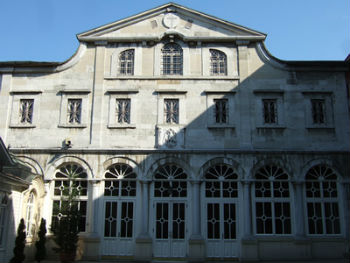
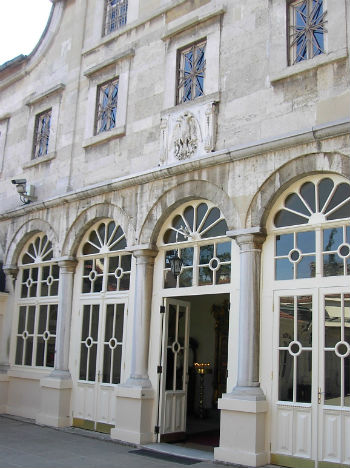
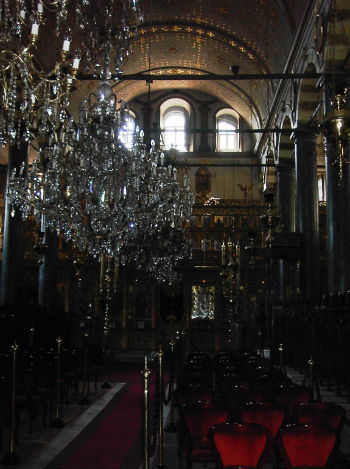
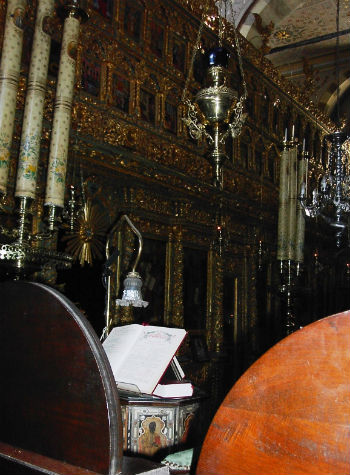
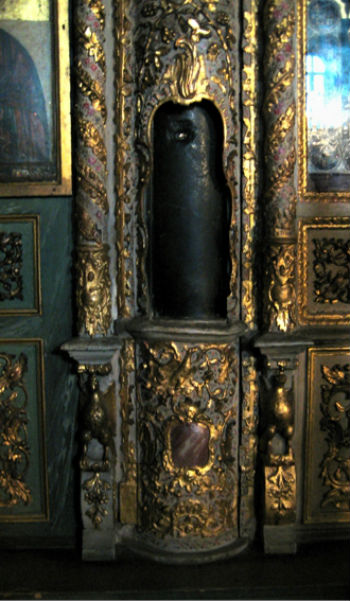


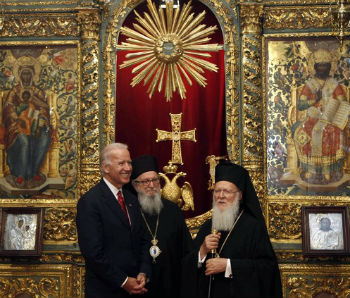


It is important to visit a catholic orthodox church, which is very important , specially in a muslim coun try. The orthodox authority here is like the pope for the Vatican.
You can visit the Patriarchate itself on appointment, but the Saint Georgios church is open to the public, and ABSOLUTELY deserves a visit by anyone coming from or interested in the Christian tradition, whether presently an atheist, a Nordic pagan, a Buddhist, or a Taoist.
The church building itself is late (XVIII century, it seems), small and very modest, but AWESOME, in any sense.
Inside, you see the Pillar of Flaggelation, the original V century Patriarchal Throne, ABSOLUTELY FANTASTIC mosaic icons, the earliest of them probably stemming from the VII and VIII centuries, the relics of Saint Grigorios and Saint Ioannis Chrysostomos, stolen during the 4th Crusade, and restituted by Giovanni Paolo II, the coffins of Saint Theothano, Saint Solomoni, etc., etc., etc. For anyone with any sense of history this site is as holy, as any holy site in Jerusalem.
This church has more dignity, grace and apostolic spirit, than Vaticano and the Moscow Patriarchate (or both combined). The two-headed Bizantine Eagle over the Holy Gates of the altar gives this humble place an air of IMPERIAL authority, at least in spiritual matters (“mein Reich ist in der Luft”).
As far as I could judge, the very few visitors were mostly Greeks or Russians, maybe some of them coming from places like Serbia or Bulgaria. I was amazed and puzzled by the fact that Western Europeans completely ignore this place, which is as important for understanding our Christian tradition, as it is.
I’ve spent a couple of hours there, contemplating the events that occured in 1054, 1204, and 1453, and how much happier a place Europe would had been without them. Everything could had been different. But it was not different.
Wovon man nicht reden darf, darüber muss man schweigen !
It shows the diferrence between the west (greek) colture and the east colture (turkish) if someone compares it with the blue mosque or the other turkish mosques.
Orthodox Patriarchate and Cathedral
Ecumenical Patriarchate of Istanbul
The Ecumenical Patriarchate of Istanbul is the surviving legacy of a religious empire that dominated the affairs of Christians worldwide for more than 1,100 years. After the fall of Rome in A.D. 476, Constantinople inherited unrivaled leadership of the Christian world under the names “Rome of the East” and “New Rome.” The Greeks, Bulgarians, Serbians, Romanians, Albanians, and Georgians who adhered to the Eastern Orthodox creed were referred to as “Romans” (thus the reason why many an Istanbul church includes the word “Rum” in its title). While the pope continued to reject the primacy of the Bishop of Constantinople (soon after given the title of Archbishop), the influence of the Patriarch of Constantinople nevertheless grew under the patronage of the emperor. The initial seat of the Patriarchate was pre-Constantine Hagia Eirene, now in the first court of Topkapi Palace. Upon Justinian’s completion of the Ayasofya, the Church was rooted here for the next 916 years (with a brief respite when the Byzantine Court was forced to flee to Nicaea after the Fourth Crusade in 1204). The Ottoman conquest displaced the Patriarchate to the Havariyun (or Church of the Twelve Apostles, now lost under Fatih Camii), before it moved to the Church of the Pammakaristos (Fethiye Camii) in 1456. In 1587, the Eastern Orthodox Church moved to the Church of the Virgin Mary in Vlah Palace, and then to St. Demetrios in Balat. The Patriarchate settled into its current spot in the Church of St. George (Ayios Yeoryios) in 1601. In the 19th century, assertions of national independence and religious autonomy whittled the influence of the Patriarchate, until its reach was constricted to the borders of the Turkish Republic and a mere handful of semiautonomous communities abroad. Still, the Orthodox community considers the Ecumenical Patriarchate one of the two most prominent Christian institutions in the world, the other being the Holy See in Rome. Today, the Patriarch and Archbishop of Constantinople is primus inter pares or “first among equals,” among the 14 autonomous and semiautonomous Patriarchates-in-communion that make up the Eastern Orthodox Church.
The present church was built in 1720 on a traditional basilica plan. It seems to lack the grandeur one would expect of its station, but the building was constructed under the Ottoman prohibition against non-Muslim use of domes or masonry roofs on their places of worship. Instead, it is topped by a timber roof. The gilded iconostasis provides some insight into the opulence one imagines of Byzantium. The Patriarchal Throne is believed to date to St. John Chrysostom Patriarchate in the 5th century A.D. His relics and those of St. Gregory the Theologian, which were hijacked after the 1204 Crusader sacking of the city, were brought back from Rome by Patriarch Bartholomew in 2004. In the aisle opposite these relics are the remains of the female saints, St. Euphemia, St. Theophano, and St. Solomone. There are also three invaluable gold mosaic icons including one of the Virgin, as well as the Column of Flagellation. The small complex is comprised of the modest Cathedral, the Patriarchate Library, administrative offices, and the Ayios Harambalos spring.
Istanbul’s Greek Orthodox Patriarchate is the official worldwide headquarters of the Greek Orthodox Church. This structure in Fener along the Golden Horn incorporates the Patriarchal Cathedral Church of St. George which has a collection of relics and artifacts.
The Patriarchate is the highest see and holiest center of the Orthodox Christian Church. In 1602, the Patriarch moved to Aya Yorgi, when the site was used as monastery. Since that time, several renovations have occurred, the most recent of which ended in 1991, owing to damage sustained by fire in 1941. Although not so significant architecturally, Aya Yorgi possesses valuable historical artifacts. Among the most significant are: a patriarchs throne from circa 5th century; three samples of rare mosaic icons; a column which is believed to have been used for the binding and flogging of Jesus in Jerusalem; and cascades belonging to three women saints.
An overwhelming experience to visit this sacred place and walk among the streets of the former Greek (now deserted) Fener neighborhood…
It was the main place for all orthodox in greece, cyprus,romania and russia etc.after the conquest, the patriarchate moved from the buildings in Hagia Sophia and then moved this place in front of the golden horn. You need to ask permision to visit.